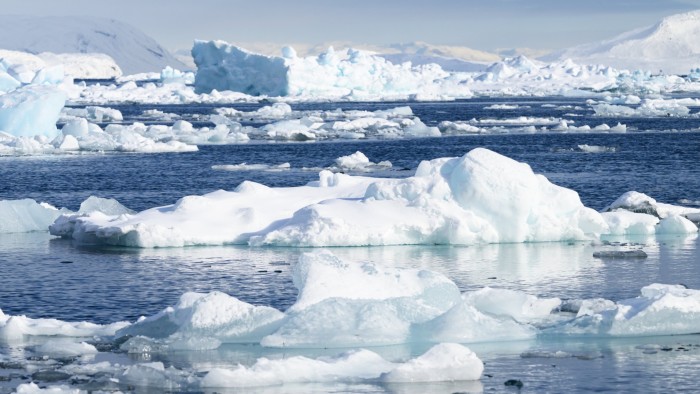Stay informed with free updates
Simply sign up to the Climate change myFT Digest — delivered directly to your inbox.
Arctic sea ice hit a record low for the end of the region’s winter last month, in a stark sign of how climate change is opening up the North Pole to a geopolitical race for military and energy exploration.
March was the fourth consecutive month in which sea ice reached a record low for that calendar period, based on a 47-year satellite record, EU earth observation agency Copernicus reported on Tuesday.
Military and commercial vessels, particularly from Russia, are stepping up activity in the region, some of which is expected to be ice-free during summer within a decade, said Rebecca Pincus, former director of the Wilson Center’s Polar Institute. US President Donald Trump’s desire to take control of Greenland has increased attention on the area’s critical minerals and importance for trade and military strategy.
“The navigation season when you can take ships up there is growing,” Pincus said. “The trend line is one direction.”
Ice cover was 6 per cent below average in March, which typically marks the end of the Arctic winter and the start of the melt season, when ice reaches its maximum annual extent.
The world’s polar regions are warming considerably faster than the rest of the planet, in part because of a negative feedback loop in which regions that lose more ice absorb more heat.
The bright white surface of sea ice plays an important role in slowing warming as it reflects sunlight back into space, in what is known as the albedo effect. Conversely, its melting creates a negative feedback loop by extending the sea’s dark surface, which absorbs more heat.
Samantha Burgess, deputy director of the Copernicus Climate Change Service, said the Canadian Arctic and the west and east coasts of Greenland had seen “much warmer than average” temperatures last month.
Ice sheets were particularly bare in the Sea of Okhotsk and the Barents Sea. Russia has been reactivating its cold war naval bases on the coastline of the Barents Sea.
The southern pole region was also facing melting, albeit more slowly, with sea ice in the Antarctic at its fourth-lowest level for March, Copernicus found.
Global land and sea temperatures on land and in sea in March were the second highest on record, and the highest on record over land in Europe for the time of year. This highlighted “once again how temperatures are continuing to break records”, said Burgess.
Heat combined with topsy-turvy rainfall patterns to create some of the wettest-ever conditions for March as well as the driest, in different parts of Europe, she added.

